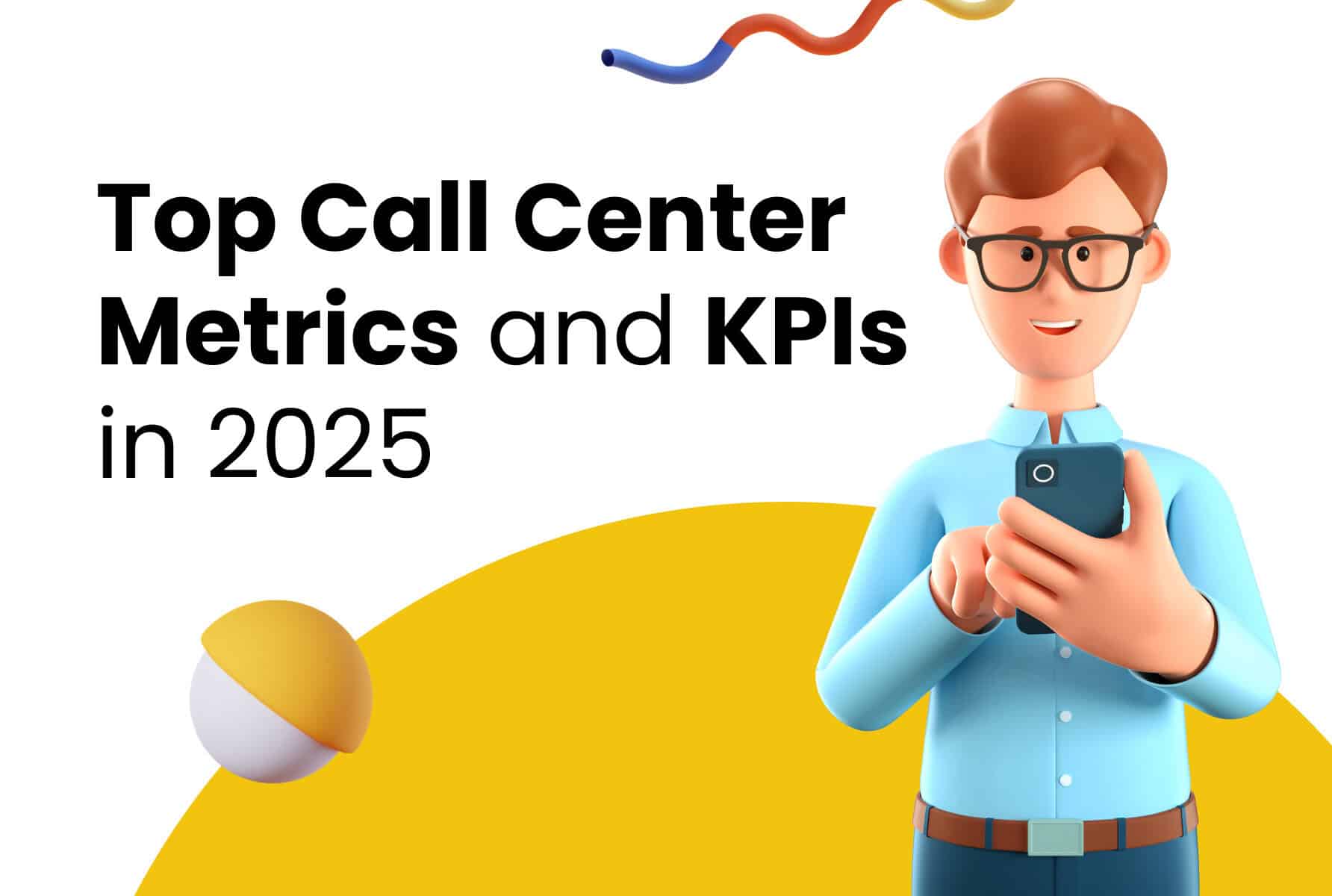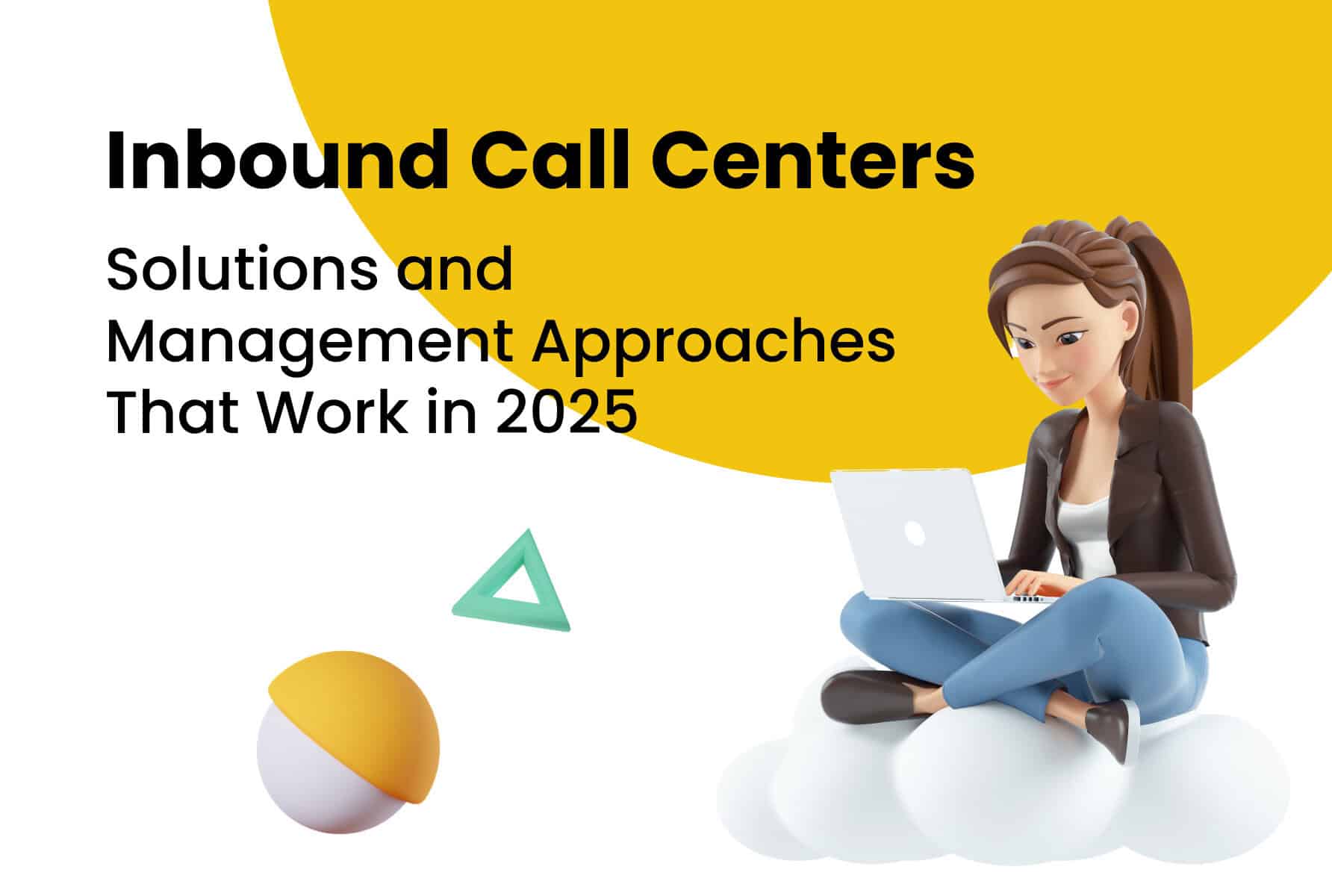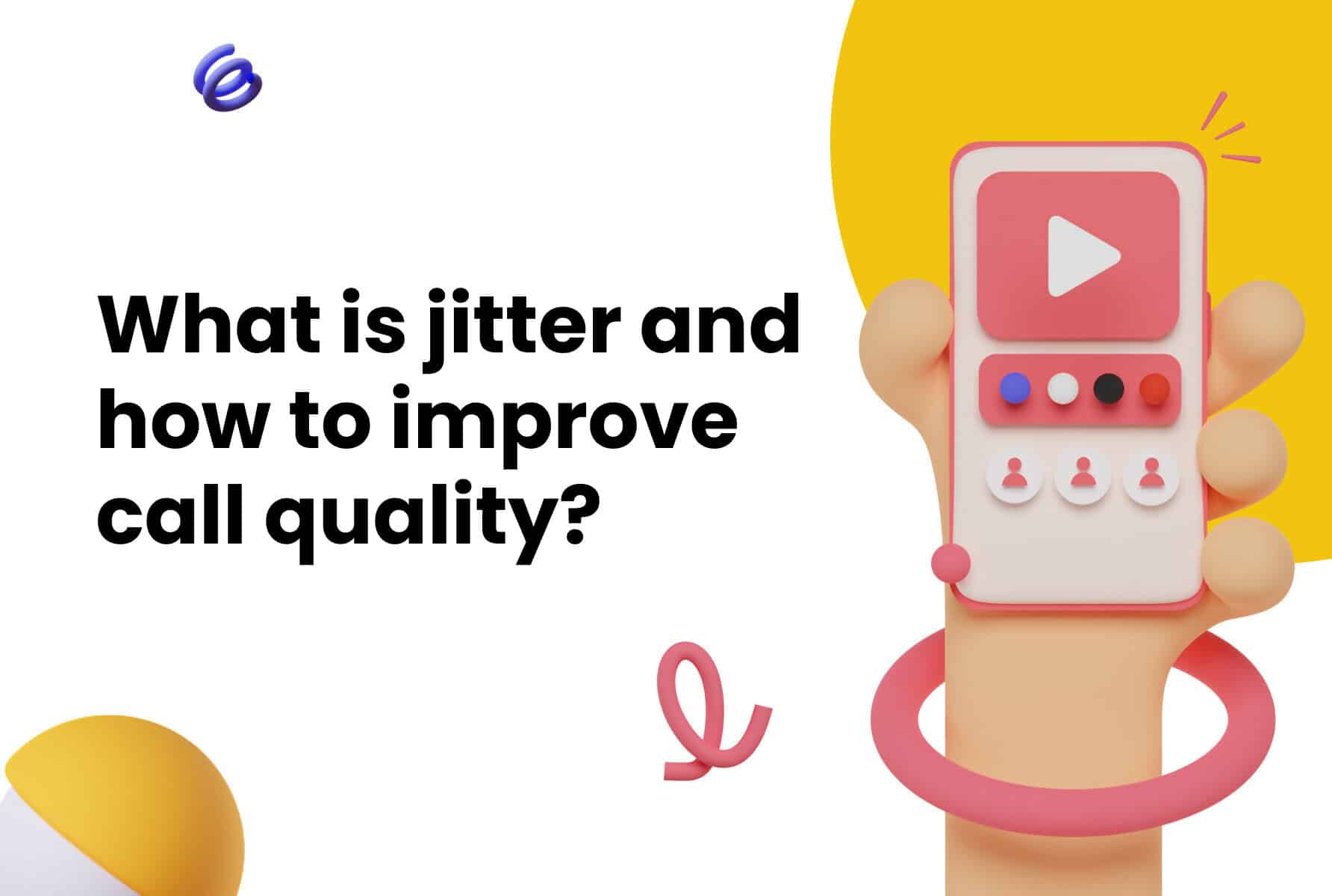Call centers are the beating heart of customer interactions, but keeping track of performance can feel like juggling a dozen flaming torches. That’s where call center metrics and KPIs come in! Call center metrics aren’t just numbers—they’re the key to happier customers, motivated agents, and real business growth.
In 2025, people expect more than just support; they want fast, personalized, and hassle-free service. So, how do you stay ahead? By tracking the right metrics. Let’s break it down in a way that actually makes sense.
What Are Call Center Metrics?
Call center metrics are numbers that show how well your call center is performing. Think of them as the scorecard that tells you whether your team is winning or needs some serious coaching. These numbers help managers see how smoothly things are running and where there’s room for improvement.
Why Call Center Metrics Are Important
Before getting down to brass tacks with some call center KPIs, let’s back up a step. Why does any of it matter in the first place? Tracking the right metrics isn’t about checking boxes; it is about comprehending what’s going on with your call center and making strategic adjustments.
Role in Evaluating Performance
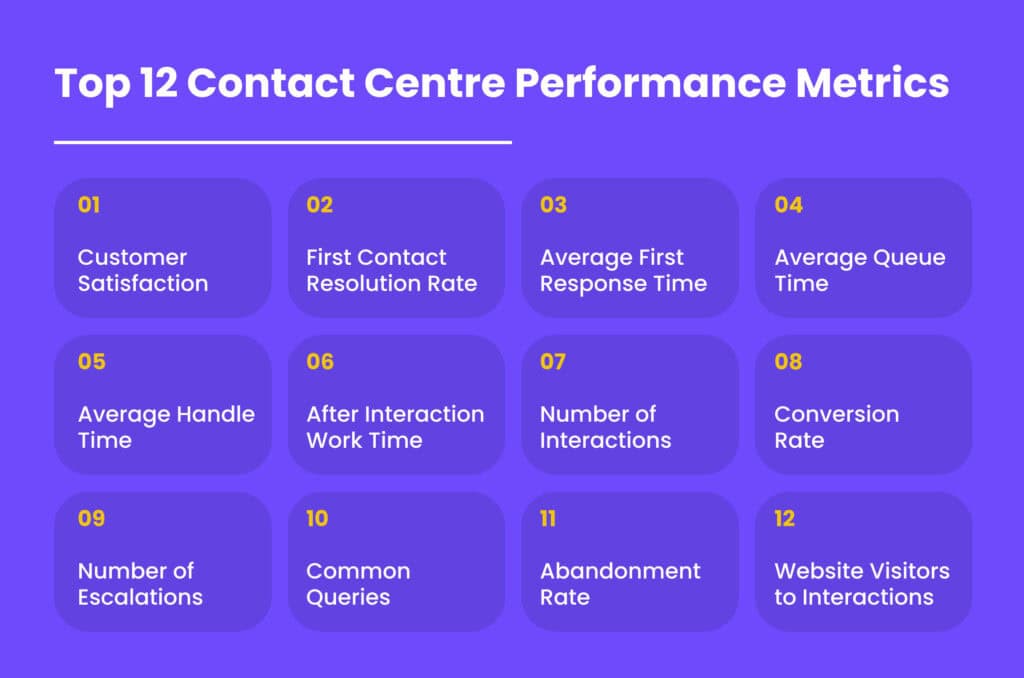
Sometimes, you just know something isn’t working—but figuring out why is the hard part. That’s where call center metrics come in. They give you clear, actionable insights into things like response times, call transfers, and customer satisfaction. With the right data, you can make improvements that actually make a difference.
Why Track Call Center Metrics?
Call centers handle thousands of interactions daily, but without the right metrics, it’s difficult to know what’s working and what needs improvement. By monitoring key metrics, managers will be able to see what’s performing well and where the trends are, leading to smarter decisions that enhance service and efficiency.
Benefits of Monitoring Metrics
Tracking metrics makes life easier for everyone—customers, agents, and managers. Keeping an eye on stats helps you:
- Identify problem areas before they explode
- Keep customers happy with faster resolutions
- Reduce burnout for agents by streamlining workflows
- Make smarter decisions with real data instead of guesswork
Impact on Customer Satisfaction
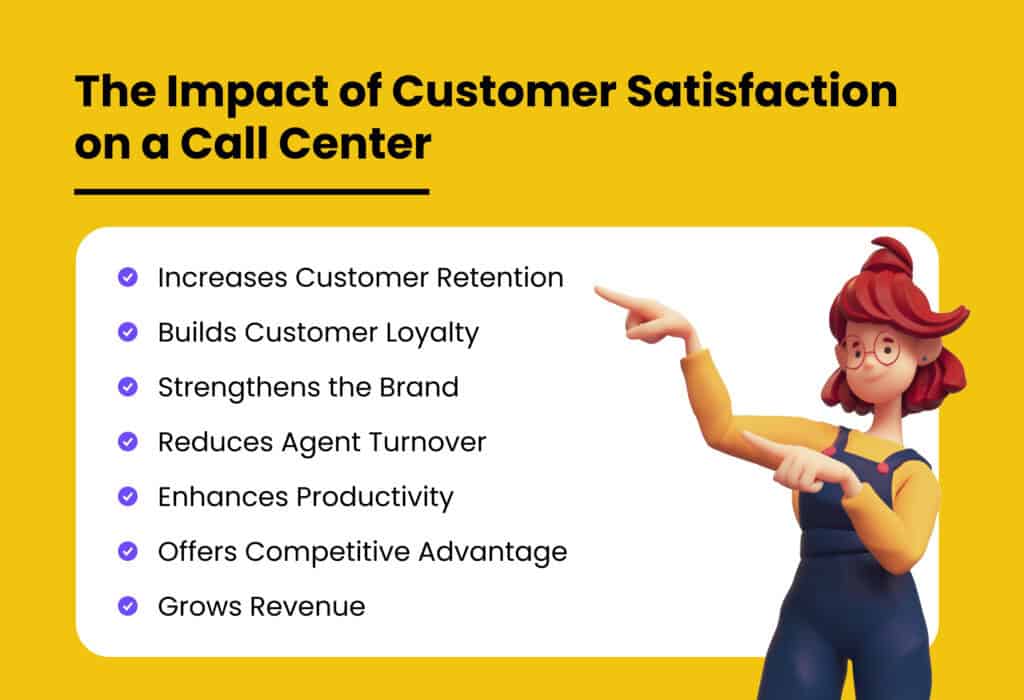
Customers today expect quick and effortless support. The faster and smoother the experience, the more likely they are to stay loyal. Tracking the right call center KPIs means you can fix hiccups before they turn into full-blown disasters and make sure customers feel heard and valued.
Influence on Operational Efficiency
No one likes wasted time, especially in a fast-paced call center. The right metrics help you cut down on inefficiencies, improve staffing decisions, and ensure agents aren’t drowning in calls they can’t handle. From there, everything can run smoother, faster, and with fewer headaches.

Key Customer Experience Metrics

Understanding how customers feel about their interactions with your call center is key. The right customer experience metrics let you measure satisfaction, spot issues, and improve processes to deliver great service. Here are the top customer-focused KPIs you should track:
1. Customer Satisfaction Score (CSAT)
This is one of the simplest yet most powerful indicators of customer experience. A higher CSAT means customers are satisfied from their interactions, while a lower score highlights areas needing improvement. Businesses typically measure CSAT through post-call surveys, but speech analytics for call centers can provide deeper insights by analyzing customer sentiment and identifying trends in real-time interactions. Keeping an eye on CSAT trends, combined with speech analytics, helps businesses identify potential service gaps and enhance overall call center efficiency.
2. First Call Resolution (FCR)
Nobody likes having to call customer support multiple times for the same issue. FCR) measures how often problems get solved on the first try—no follow-ups needed. A high FCR means agents have the right training and tools to handle concerns quickly and effectively. Improving this not only boosts customer trust and loyalty but also helps cut down on support costs.
3. Net Promoter Score (NPS)
Loyal customers are the backbone of any business, and NPS helps measure their willingness to promote your services. This metric is gathered by asking customers how likely they are to recommend your company on a scale from 0-10. Those who rate 9-10 are promoters, while those below 6 are detractors. A strong NPS reflects a company’s ability to deliver consistently positive customer experiences.
4. Customer Effort Score (CES)
The easier it is for customers to resolve their issues, the better their experience. CES measures how easy it is for customers to get help. A low score means fewer hurdles and faster solutions. By improving call routing, equipping agents, and simplifying processes, businesses can make support smooth and hassle-free.
Essential Agent Performance Metrics
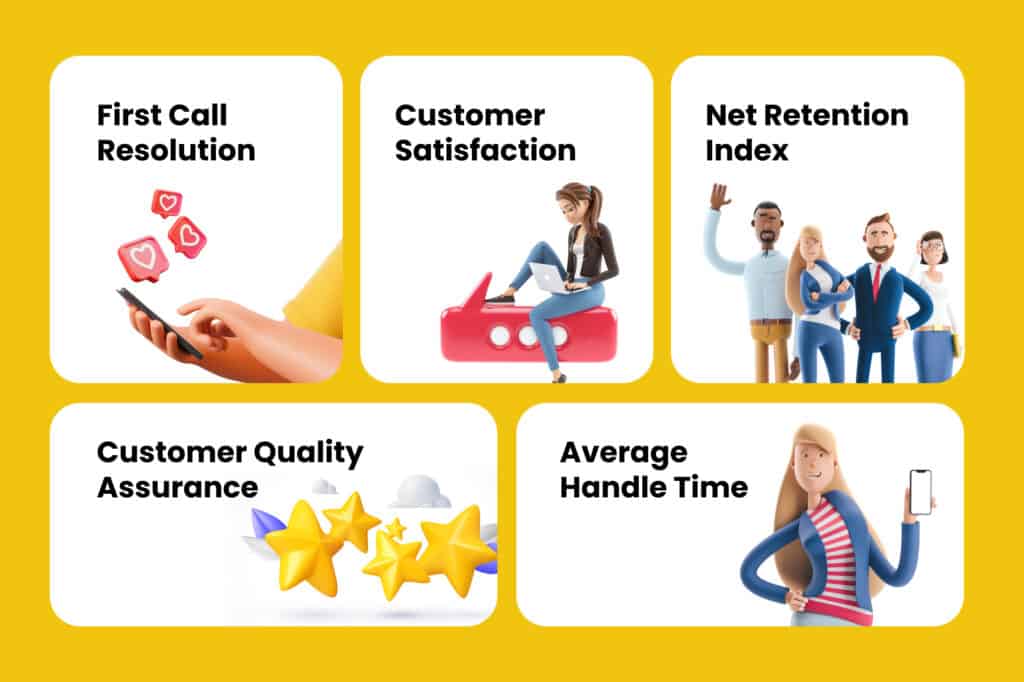
Your agents are in contact with customers every day, but how do you measure their impact? The right metrics will show you how productive they are, their workload, and the impact on customer satisfaction. Tracking these insights helps you improve efficiency, support your team, and ensure great service.
1. Agent Effort Score
This metric illustrates how easy or difficult it is for agents to resolve customer issues. A high score may indicate confusing processes, lack of training, or old tools. By streamlining workflows and better equipping agents to do their jobs, the job will become easier and more rewarding.
2. First Response Time (FRT)
FRT tracks how fast an agent responds to an incoming call. Customers expect quick help, and delays can lead to frustration. Shortening FRT helps improve customer satisfaction, build loyalty, and reduce hang-ups.
3. Average Handle Time (AHT)
AHT measures the total duration of a customer interaction, from the moment the agent picks up the call to the time they complete any necessary follow-up work. While keeping calls short is important, quality should never be sacrificed for speed. Striking the right balance ensures efficiency without compromising customer satisfaction.
4. Wrap-Up Time
After finishing a call, agents often spend additional time logging notes, updating CRM records, and finalizing any required actions. Keeping wrap-up time minimal ensures agents can move on to the next call quickly while still capturing essential details for future reference.
5. Call Abandonment Rate
This metric shows how many customers hang up before speaking to an agent. High rates usually mean long wait times or poor call routing. Cutting down queue times and offering callbacks can help keep customers from giving up.
6. Total Resolution Time
Unlike AHT, which focuses on individual calls, total resolution time considers the entire journey of an issue, including follow-ups and escalations. The goal is to minimize delays and resolve customer problems as quickly as possible.
7. Transfer Rate
If customers are being passed around between multiple agents before their issue is resolved, it can be frustrating and time-consuming. A high transfer rate suggests knowledge gaps or poor call routing. Training agents to handle a wider range of queries and optimizing call distribution can help reduce unnecessary transfers.
8. Agent Utilization Rate
This KPI measures the amount of time agents actually spend on calls instead of waiting for the next one. The proper balance keeps workers productive without burning out.
9. Adherence to Schedule
Call centers rely on smart scheduling to meet demand. High schedule adherence means less wait time for customers, better coverage, and smoother operations.
10. Calls Answered Per Hour
This measures agent productivity by tracking the number of calls handled by each agent in an hour. A higher number can be indicative of efficiency, but one has to make sure it does not affect the quality of service. Together with CSAT and FCR, this forms a balanced analysis of performance.

Call Center Operational Metrics
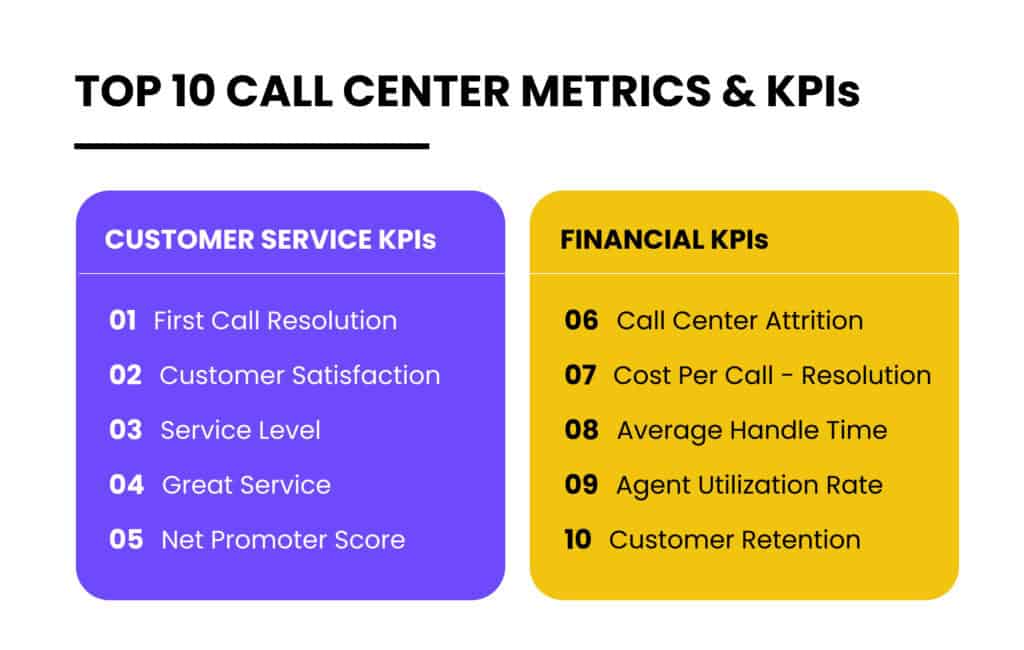
A successful call center isn’t just about happy customers and top-performing agents—it also needs to run efficiently. These metrics help manage staffing, costs, and call flow to keep things running smoothly. Tracking the right KPIs ensures better efficiency, lower costs, and higher service quality.
1. Calls Handled Volume
This metric tracks how many calls your team handles each day, week, or month. A high volume can mean strong demand—but it might also mean your agents are stretched too thin. Spotting these trends helps you plan staffing, allocate resources, and manage call flow more effectively.
2. Cost Per Call (CPC)
How much does each call cost your business? CPC accounts for representative labor, technology, and infrastructure costs. The goal is to decrease the cost without compromising service quality. Automation, self-service, and wiser staffing are they key to cutting costs without making customers miserable.
3. Call Arrival Rate
Call arrival rate measures how many calls come in at different times of the day, week, or month. Recognizing peak hours allows you to schedule agents efficiently, reducing wait times and improving customer satisfaction. A sudden surge in calls may also indicate product issues or service disruptions.
4. Average Query Resolution Age
This metric tracks how long issues stay open. Long wait times may signal process bottlenecks or resource gaps. Prioritizing cases, automating tasks, and better training can speed things up.
5. Service Level Performance
Service level performance assesses whether your call center is meeting predefined response goals. A common goal is answering 90% of calls within 30 seconds. Maintaining strong service levels keeps customers happy, reduces frustration, and ensures operations continue to run smoothly.
6. Repeat Call Frequency
Repeat call frequency indicates how often customers call back for the same issue. A high rate reflects that problems aren’t getting fixed the first time, which creates frustration and adds extra costs.
H2: Differences in Related Metrics
Not all call center metrics serve the same purpose. Some focus on customer interactions, while others track efficiency and costs. Understanding these differences will help you in selecting the appropriate KPIs for your needs. When you know which metrics apply to different aspects of call center operations, you’ll make more informed decisions, thus implementing meaningful improvements.
H3: Call Center vs. Contact Center Metrics
Call centers focus on voice communication, managing incoming and outgoing customer calls. Their performance is measured through phone-based metrics like call duration, first-call resolution, and abandonment rates.
On the other hand, contact centers operate across multiple communication channels, including phone, email, live chat, SMS, and social media. Therefore, contact center metrics are larger in scope, seeing as they measure how well omnichannel customer interactions have been performing. They encompass the response time of emails, the resolution rates of chats, and customer engagements across platforms. With the help of contact center analytics, businesses can gain deeper insights into these interactions to better understand customer behavior and improve service across all touchpoints. Businesses must determine whether traditional call center KPIs or contact center metrics better align with their customer service strategy.
H3: Customer Service vs. Call Center Metrics
Customer service extends beyond the scope of a call center. While call center metrics focus on measuring phone-based support efficiency, customer service KPIs evaluate the overall quality of customer interactions across all touchpoints.
For example, Net Promoter Score (NPS) and Customer Effort Score (CES) apply to the broader customer experience, assessing brand loyalty and ease of interaction. Meanwhile, call center-specific metrics such as call handle time, transfer rates, and adherence to schedule primarily gauge agent and operational performance within the phone support channel. Companies that offer multichannel support should track both types of metrics to ensure a seamless customer journey.
H3: How Related Metrics Vary in Purpose
While some metrics measure operational efficiency, others focus on customer satisfaction and engagement. For example:
- Speed vs. Quality: Metrics like Average Handle Time (AHT) emphasize speed, but improving speed too much could compromise quality. Meanwhile, First Call Resolution (FCR) balances efficiency with customer satisfaction.
- Cost vs. Customer Experience: Metrics like Cost per Call (CPC) and Agent Utilization Rate focus on efficiency, while CSAT and NPS measure customer satisfaction. The goal is to strike the right balance—keeping costs down without sacrificing great service.
- Internal vs. External Metrics: While internal metrics, such as agent adherence, are for managers to keep their teams efficient, external metrics, such as CES, show just how smooth and easy the experience feels to customers.
By understanding these distinctions, businesses can tailor their call center strategy to optimize both efficiency and customer experience.
Strategies to Improve Call Center Metrics
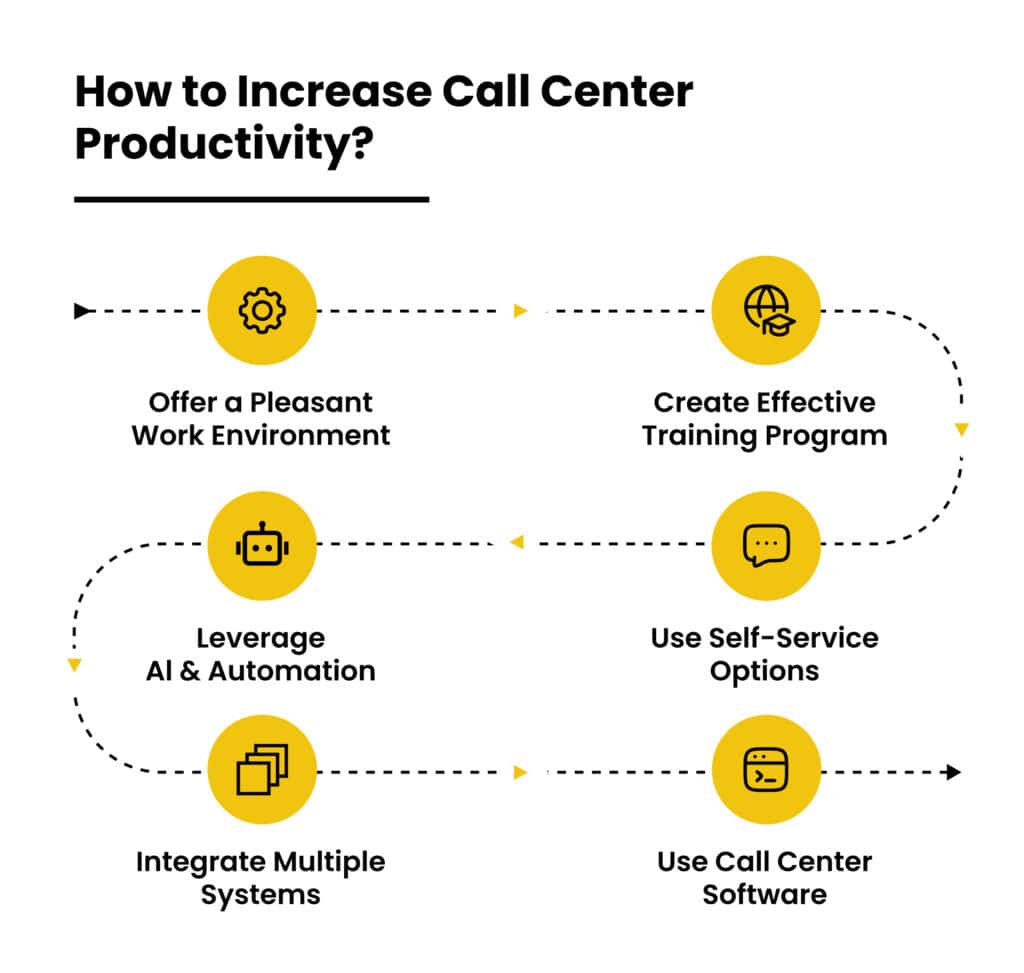
So, you’ve got the data—now what? Tracking metrics is just the start. The real impact comes from using those insights to refine operations, train agents, and boost performance.
Evaluate Current Performance Levels
Before making changes, get a clear view of how things are going. Review data, agent performance, and customer feedback to spot what’s working and what needs improvement. Focus on trends over time and compare your results to industry benchmarks. Incorporating call center performance testing can also provide valuable insights into operational strengths and weaknesses. This evaluation helps pinpoint critical pain points that need immediate attention.
Define Clear and Measurable Goals
Vague goals don’t lead to actionable developments. Instead of saying, “We need to do better,” define specific objectives like “reduce call abandonment rate by 10% in six months” or “increase first call resolution by 15%”. Clear, measurable goals provide a roadmap for agents and managers, ensuring everyone is aligned on what success looks like.
Monitor Consistent Progress Over Time
Setting goals is just the start—tracking progress is what keeps things moving. Regular check-ins help managers catch issues early, while weekly or monthly reviews keep teams focused.
Identify Training Needs with Technology
Performance gaps often stem from a lack of proper training. AI-driven analytics can highlight weak spots in agent knowledge or skill sets. Call recordings, sentiment analysis, and customer feedback can identify areas where agents struggle the most. Tailored training sessions based on real-world data help agents develop skills that directly improve key metrics.
Optimize Workflows for Efficiency
A smooth workflow makes all the difference. Automating repetitive tasks lets agents focus on what really matters—helping customers with more complex issues. Intelligent call routing ensures customers are connected to the right department or agent quickly, reducing unnecessary transfers. Workflow optimization also includes improving CRM integrations so that agents have all the customer details they need at their fingertips, reducing handling times and frustration.
Encourage a Data-Driven Culture
Successful call centers prioritize data-driven decision-making at all levels. Encourage agents and supervisors to regularly review performance metrics and suggest improvements. Creating a culture where data is embraced rather than feared fosters proactive problem-solving and continuous optimization.
Improve Agent Engagement and Motivation
Happy agents perform better. Burnout leads to poor service and high turnover. Recognizing efforts, offering incentives, and supporting growth keep agents motivated and engaged.
Leverage Customer Feedback for Continuous Improvement
Customer feedback is a goldmine of insights. Regularly collect and analyze feedback from surveys, reviews, and recorded calls. Understanding customer pain points allows you to refine service strategies, improve agent training, and make informed adjustments to processes that impact satisfaction scores.
Implement Real-Time Monitoring and Coaching
Instead of waiting for weekly or monthly performance reviews, use real-time monitoring tools to provide instant feedback to agents. Supervisors can step in during challenging calls to assist, correct mistakes, and offer live coaching. This immediate intervention prevents minor issues from escalating into larger customer service problems.
Adopt AI and Predictive Analytics
AI-powered tools can forecast call volumes, predict peak times, and even analyze sentiment during customer interactions. Predictive analytics help managers prepare for high-demand periods, allocate resources effectively, and proactively address potential issues before they impact service quality.
Test and Iterate Strategies
Making improvements in a call center isn’t something you simply do and forget about—it’s a constant process of tweaking, testing, and refining. The best way to stay ahead is by experimenting with different approaches. Try A/B testing new call scripts, adjusting call routing methods, or revamping agent training programs to see what works best. The more you test and adapt, the better your call center will perform, ensuring that both customers and agents have the best possible experience.
By implementing these strategies, call centers can move beyond just tracking numbers and start making meaningful changes that improve both efficiency and customer experience.
At the end of the day, tracking call center KPIs needs to be purposeful, with the goal of making things easier for both your team and your customers. When you pay attention to the right metrics, you can catch small problems before they turn into big headaches, fine-tune how your call center runs, and create a smoother experience for everyone involved.
The key? Don’t just measure for the sake of it. Pick the metrics that actually matter to your goals, monitor them regularly, and use what you learn to keep improving. That’s how you turn data into real results.
FAQ
They are key performance indicators that track how well a call center is operating.
They help improve customer experience, optimize operations, and keep agents productive.
CSAT, FCR, NPS, AHT, and CPC are among the top ones to track.
It measures how often issues are resolved on the first call without follow-ups.
Lower AHT improves efficiency, but only if it doesn’t hurt service quality.
Absolutely! Better metrics lead to smoother, faster, and more effective support.
